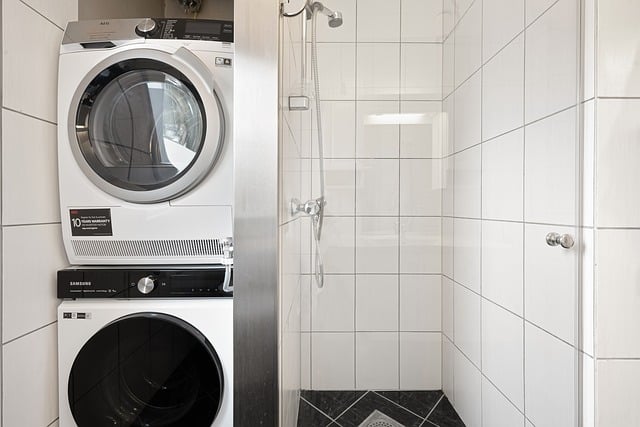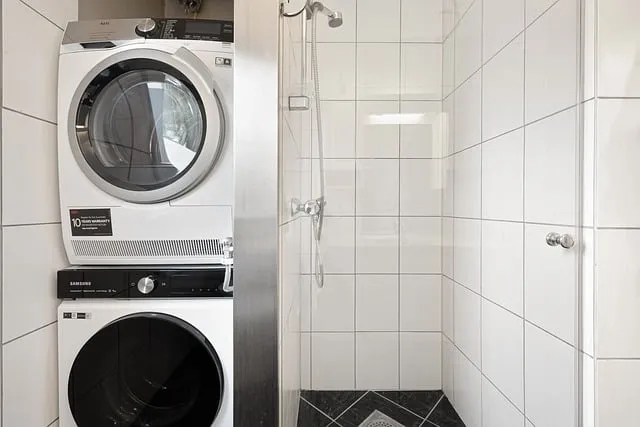How Can You Use Data Analytics to Improve Dryer Energy Efficiency?
First off, data analytics can track how efficiently your dryer is running. Picture this: sensors and smart meters feed data into a system that shows you exactly how long each cycle takes and how much energy it consumes. It’s like having a detailed map of your dryer’s energy consumption. With this map, you can spot patterns and anomalies. Maybe your dryer is using twice as much energy on a certain cycle or taking longer to dry clothes. Data analytics can pinpoint these issues.
But it doesn’t stop there. By analyzing usage patterns, you can optimize drying times. For instance, if data shows that your dryer performs better on shorter cycles, you can adjust your settings accordingly. It’s akin to finding the perfect recipe for baking cookies—you adjust the temperature and time to get the best result. Here, you’re tweaking your dryer’s settings to maximize efficiency.
Also, data analytics helps in predictive maintenance. It can signal when your dryer is likely to need a repair before it even breaks down. Think of it as your dryer giving you a heads-up that it’s feeling a bit under the weather. This way, you avoid unexpected energy hogs and keep everything running smoothly.
In essence, using data analytics for your dryer is like giving it a fitness tracker. You’ll know when it’s slacking off and when it’s performing at its best, leading to a more energy-efficient, cost-effective appliance.
Revolutionizing Home Efficiency: How Data Analytics Can Slash Your Dryer’s Energy Use
Data analytics can track how efficiently your dryer is operating by monitoring various factors such as load size, drying times, and even humidity levels. Imagine having a personal energy coach that constantly tweaks your dryer’s performance to ensure it uses the least amount of energy necessary. Sounds like magic, doesn’t it? But it’s all grounded in data-driven insights.
With data analytics, you can identify patterns in your dryer’s usage and pinpoint inefficiencies. For instance, you might discover that drying smaller loads more frequently is actually less efficient than drying larger loads less often. The data can help you adjust your habits, saving you both time and money. Think of it like having a GPS for your dryer’s energy route, guiding it away from wasteful detours.
Moreover, smart dryers equipped with data analytics can even suggest the optimal settings for each load. This way, you’re not just guessing if you’ve selected the right cycle—your dryer tells you precisely what’s needed. It’s like having a tech-savvy friend who’s always on hand to help you make the best choices for energy savings.
In essence, data analytics isn’t just a fancy buzzword—it’s your ultimate tool for revolutionizing home efficiency. By delving into the numbers, you’ll uncover opportunities to slash your dryer’s energy use and make your home more eco-friendly.
Unlocking Savings: The Power of Data Analytics in Enhancing Dryer Energy Efficiency
Data analytics dives deep into how your dryer operates, analyzing patterns and performance metrics. It’s akin to peeking under the hood to see what’s really going on. By examining variables like drying times, cycle choices, and even ambient conditions, it pinpoints exactly where your dryer might be wasting energy. Imagine it as a savvy detective, tracking down inefficiencies and providing actionable insights.
Consider this: with data analytics, you can identify which dryer settings are most efficient for different types of loads. It’s like having a personal coach that tells you exactly how to get the most mileage out of every drying session. By adjusting settings based on this data, you’re not just reducing energy consumption; you’re extending the lifespan of your dryer.
Moreover, data analytics helps in forecasting and scheduling dryer use more strategically. Picture it as setting up a well-planned workout routine—your dryer runs when it’s most efficient, potentially during off-peak hours when energy costs are lower. This smart scheduling doesn’t just save you money; it also contributes to a greener footprint by reducing overall energy demand.

In essence, integrating data analytics into your dryer’s operations is like upgrading from a basic car to a high-tech model with built-in efficiency systems. You’re making a smart move towards smarter, more economical drying.
From Numbers to Savings: How Data Analytics Transforms Dryer Energy Consumption
So, how does this work? Picture your dryer as a giant sponge soaking up energy. Without a plan, it’s easy for that sponge to get soaked with excess energy, draining your wallet. Data analytics steps in like a savvy guide, telling you exactly when and how much energy your dryer uses. It breaks down complex data into actionable insights, helping you understand patterns and pinpoint where energy is being wasted.
For instance, let’s say you’ve noticed your dryer seems to run longer than it should. Data analytics can help you identify the exact problem—maybe it’s due to overloading or an inefficient drying cycle. By analyzing usage patterns and performance data, it can recommend adjustments or even suggest more energy-efficient settings that fit your habits.
But it gets even better. Advanced analytics can compare your dryer’s performance with similar models and historical data. This means you get a clearer picture of whether your dryer is running optimally or if it’s time for an upgrade. Imagine having a checklist that tells you exactly how to get the most out of every load of laundry, saving you both energy and money.
In essence, data analytics transforms the way you interact with your dryer. It’s like having a detailed map to navigate the tricky terrain of energy consumption, guiding you to savings with pinpoint accuracy.
Smart Drying: Using Data Analytics to Optimize Your Dryer’s Energy Efficiency
How does it work? Well, data analytics tracks various factors like drying times, load sizes, and even humidity levels. It’s like your dryer gets a detailed report card, revealing exactly how much energy it’s using and where improvements can be made. For instance, if your dryer consistently uses more energy than needed, analytics can pinpoint the issue, whether it’s an overloading problem or a faulty sensor.
Picture this: You have a dryer that adjusts its settings based on real-time data. Instead of using a one-size-fits-all approach, it customizes its energy usage to match each load perfectly. This means less energy wasted and more savings in your pocket. Plus, with predictive analytics, your dryer can even alert you when maintenance is needed before problems arise, preventing costly repairs and extending the life of your appliance.
Data-driven insights can also help in scheduling dryer use at off-peak times, which can reduce energy costs further. It’s like having a savvy energy manager who knows the best times to run your dryer without breaking the bank.
Embracing smart drying through data analytics is like giving your dryer a high-tech makeover. It’s all about turning complex data into practical steps that optimize energy efficiency and keep those energy bills in check.
The Data-Driven Approach to Cutting Your Dryer’s Energy Bills: A Step-by-Step Guide
Start by tracking your dryer’s usage. Many modern appliances come with smart features that let you monitor how often and how long you use them. Apps and smart meters can provide insights into your energy consumption patterns. It’s like having a personal coach for your dryer. Notice any peaks or unusual spikes? This is your chance to make adjustments.
Next, use this data to adjust your dryer’s settings. For instance, if you find that certain cycles are using more energy, consider switching to shorter or less intense settings. It’s like choosing between a quick sprint and a marathon—both get the job done, but one is way more energy-efficient.
Additionally, think about the load size. Data often shows that overloading or underloading can lead to inefficient drying. Instead, aim for a balanced load that’s just right for the dryer’s capacity. Think of it like cooking: overcrowding your pan means uneven results, while a perfectly sized batch cooks evenly and efficiently.
Finally, keep an eye on maintenance. Data might reveal that your dryer’s performance drops when it’s dirty or has clogged vents. Regular cleaning and maintenance ensure it runs smoothly, just like keeping your car’s engine in top shape.

Embrace this data-driven strategy, and watch those energy bills shrink as you get the most out of your dryer’s performance.
Efficiency Meets Innovation: Leveraging Data Analytics for a Greener Dryer
Picture this: every time you toss a load into your dryer, data analytics swoops in like a digital superhero. By analyzing patterns such as the size and type of the load, as well as the humidity level in your dryer, it tailors the drying cycle to use only the energy needed. No more wasting electricity on an overly long cycle!
Now, let’s talk about the power of real-time adjustments. Data analytics isn’t just sitting idle; it’s actively learning and adapting. It’s like having a personal assistant who knows exactly when to adjust the temperature or drying time to ensure your clothes are dried efficiently. This smart approach prevents over-drying, which can save on energy and extend the lifespan of your clothes.
Think about how this data-driven approach is akin to a chef fine-tuning a recipe. Just as a chef adjusts ingredients to get the perfect dish, your dryer’s data analytics tweak the drying process for optimal performance. The result? Less energy wasted and more savings on your electricity bill.
Plus, this innovation doesn’t just benefit your wallet. By using energy more wisely, you’re reducing your carbon footprint. It’s like giving Mother Earth a high-five every time you use your dryer.
So, the next time you toss a load in, remember that behind the scenes, data analytics is working its magic to make your drying process greener and smarter. Isn’t it incredible how technology can turn a mundane chore into an eco-friendly triumph?
Beyond the Basics: Advanced Data Analytics Techniques to Boost Dryer Energy Efficiency
Firstly, predictive analytics is your new best friend. By analyzing historical data, you can forecast future energy usage patterns and adjust dryer settings to avoid overuse. Think of it like a weather forecast for your dryer—knowing when it’s going to need more energy helps you optimize usage.
Next, let’s talk about machine learning algorithms. These are like the secret sauce for understanding complex data sets. They sift through tons of data, identify patterns, and predict energy consumption with stunning accuracy. This can help you pinpoint exactly when your dryer is using more energy than necessary and why.
Don’t forget about real-time analytics, either. It’s akin to having a dashboard that shows you exactly what’s happening with your dryer at any given moment. By monitoring energy consumption as it happens, you can instantly adjust settings to reduce waste.
Finally, consider integrating IoT (Internet of Things) sensors. These sensors provide granular data about your dryer’s performance, like a fitness tracker for your appliance. They offer insights that can lead to smarter energy-saving strategies tailored just for your dryer’s unique needs.

